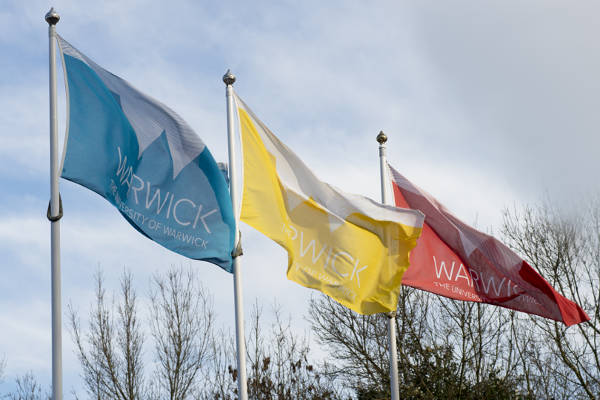News
Bonlab wraps biological spores in a polymer-based nanoparticle mesh
Nick Ballard and Stefan Bon report in Polymer Chemistry on a new method for the decoration of the intricate morphology of spore particles with polymer nanoparticles and investigate their behaviour at liquid–liquid interfaces. We found a large difference in the interfacial activity between spherical microspheres and the anisotropic particles synthesized here and describe this in terms of particle wettability. More on the bonlab; http://dx.doi.org/10.1039/C0PY00335B
Stefan Bon and collaborators fabricate Janus microspheres by "Sandwich" microcontact printing
Stefan Bon and collaborators report in Advanced Materials on A “sandwich” microcontact printing method. Monolayers of porous epoxy polymer microspheres made via microfluidics are transformed into Janus particles with distinct functionality on each face by reaction with amine functional fluorescent dyes, carbohydrates, and magnetic nanoparticles. http://dx.doi.org/10.1002/adma.201003564

Dixon group reports first atomic level structural data for smallest known oncoprotein
The E5 protein from bovine papllimavirus is a type II membrane protein and represents the smallest known oncoprotein. E5 functions via a unique mechanism, and in order to better understand this mechanism, Ann Dixon and previous lab members Gavin King and Joanne Oates, as well as current lab member Dharmesh Patel have used solution state NMR spectroscopy to obtain the first structural data for the E5 dimer in a membrane mimetic. These data were used to map the dimerization interface as well as calculate the free energy of dimerization for the E5 protein, in collaboration with Dr. Hugo van den Berg in the Mathematics Institute. The results agree very well with in vivo data, and further reinforce the importance of interactions in cell memebranes to biological function.
Mechanism of alkene hydroamination established by Peter Scott group and co-workers
A new class of highly active zirconium catalyst for the synthesis of chiral heterocycles from aminoalkenes is shown to operate via a Zr=N bonded (imido) species. Peter Scott and group members Laura Allan and Andrew Gott, in collaboration with David Fox and Guy Clarkson at Warwick, report in Journal of the American Chemical Society a detailed EPSRC-funded study which for the first time excludes the conventional Zr-N (amido) mechanism.
and group members Laura Allan and Andrew Gott, in collaboration with David Fox and Guy Clarkson at Warwick, report in Journal of the American Chemical Society a detailed EPSRC-funded study which for the first time excludes the conventional Zr-N (amido) mechanism.

Dr Manuela Tosin joins as assistant prof. of organic chemistry
Dr Manuela Tosin will be joining Warwick Chemistry as an Assistant Professor in Organic Chemistry from 1 November 2010. Dr Tosin's research interests are primarily in the area of the discovery and generation of new natural products. Manuela comes to Warwick Chemistry from the Department of Biochemistry, University of Cambridge where she worked with Dr Joe Spencer and Prof Peter Leadlay.
Prof. Fred McLafferty Officially Opens the new Ion Cyclotron Resonance Laboratory
O’Reilly group reports on Multistep DNA-Templated Reactions
Phillip Milnes and Rachel O’Reilly collaborated with colleagues at the University of Oxford (Turberfield group) and University of Southampton (Stulz group) to report on Multistep DNA-templated reactions, which allow the synthesis of functional oligomers of an arbitrary length. Key features of the mechanism are that successive coupling reactions take place in near-identical environments and that purification is only necessary in the last synthesis step.
Angew. Chem. Int. Ed, 2010, early view (DOI: 10.1002/anie.201002721)
http://onlinelibrary.wiley.com/doi/10.1002/anie.201002721/abstract
Matthew Gibson and collaborators report on stimuli responsive nanoparticles in Advanced Materials
Poly[poly(ethyleneglycol)methacrylate] coated gold nanoparticles are shown to display size dependant temperature-responsive behaviour - known as LCST (lower critical solution temperature). This behaviour was shown to be cooperative, allowing for the observed transition temperature to be fine-tuned by a simple mixing procedure. Finally, this was exploited to direct the assembly of nanoparticles onto complementary, polymer brush-coated surfaces
Link: http://onlinelibrary.wiley.com/doi/10.1002/adma.201001382/abstract
New publication: A Potent Trans-Diimine Platinum Anticancer Complex Photoactivated by Visible Light
A Potent Trans-Diimine Platinum Anticancer Complex Photoactivated by Visible Light
N. J. Farrer, J. A. Woods, L. Salassa, Y. Zhao, K. S. Robinson, G. Clarkson, F. S. Mackay, P. J. Sadler
Angew. Chem. Int. Ed, 2010, early view. DOI: 10.1002/anie.201003399
Activating platinum with light: An inert platinum(IV) diazido complex trans,trantrans,trans-[Pt(N3)2(OH)2(py)2] becomes potently cytotoxic to cancer cells when activated by low doses of visible light.
http://0-www3.interscience.wiley.com.pugwash.lib.warwick.ac.uk/cgi-bin/fulltext/123597042/PDFSTART
Biophysical Chemistry Group report published
A review article on linear dichroism (LD) spectroscopy has been published by members of the Biophysical Chemistry Group and is now available online:
Matthew R. Hicks, Jaroslaw Kowalski and Alison Rodger Chem. Soc. Rev., 2010
DOI: 10.1039/b912917k LD spectroscopy of natural and synthetic biomaterials
New framework structure for anion exchange and catalysis
Richard Walton and PhD student Helen Playford have collaborated with colleagues at the University of Liverpool, University of Newcastle and Diamond Light Source to characterise a new cationic framework material, discovered by the Liverpool group of Dr Andrew Fogg. This work has just been published in Journal of the American Chemical Society and has been publicised as a Science Highlight by Diamond.
http://pubs.acs.org/doi/abs/10.1021/ja104636xhttp://www.diamond.ac.uk/Home/Beamlines/I19/casestudies/casestudy4.html
Awards from the MACRO UK Conference
The presentations given by the young polymer scientists were judged at the MacroUK conference in Nottingham and awarded during the MacroUK AGM meeting at the 43rd IUPAC World Polymer Congress MACRO2010 in Glasgow.
First Place: Domino Macro Group UK Annual Young Polymer Scientist 2010 Prize £1500
Awarded to Stacy Slavin (Dave Haddleton’s group)
Third Place: Domino Macro Group UK Annual Young Polymer Scientist 2010 Prize £250
Awarded to Dr Helen Willcock (Rachel O’Reilly’s group)

